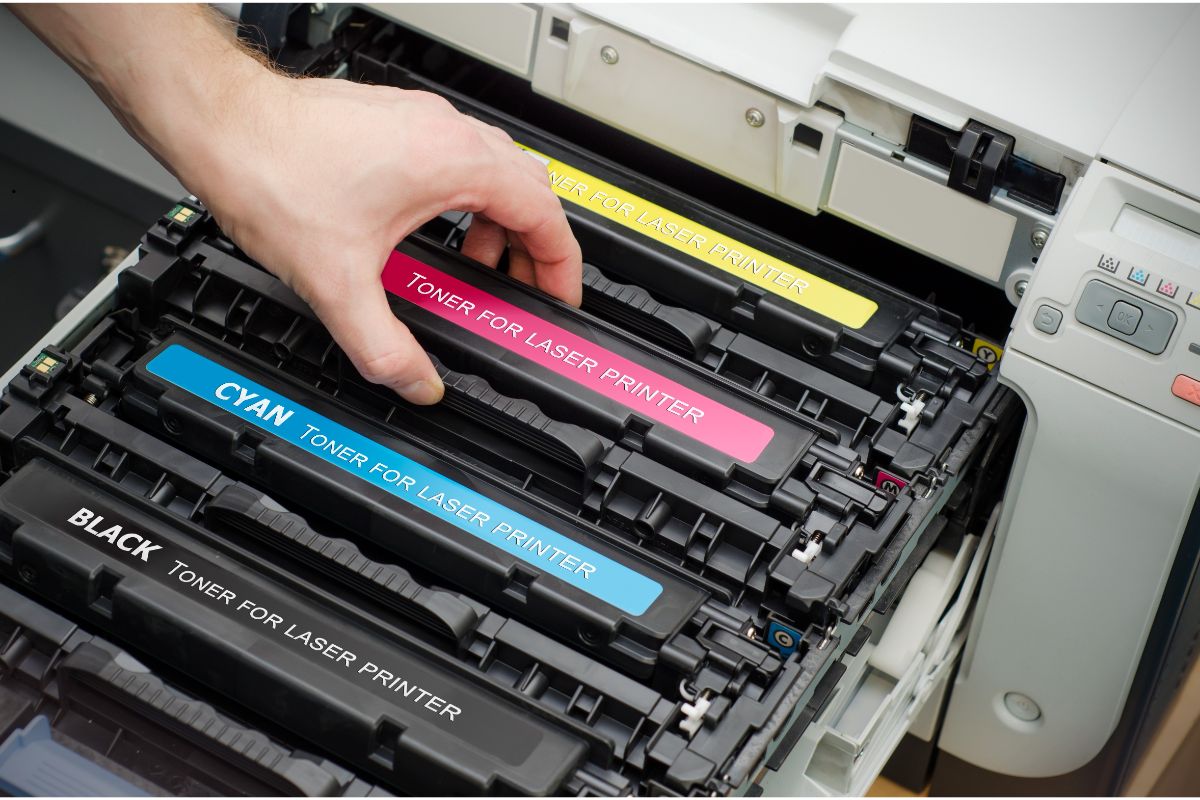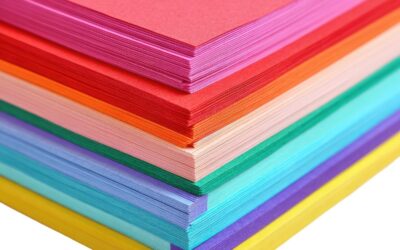You’ve likely heard of toner if you’ve ever used a laser printer or multifunction copier. But what exactly is toner, and how does it work in your printing device? Understanding toner is essential whether you run a business, manage an office, or manage the print process.
In this blog post, we’ll explain everything you need to know about printer toner—what it is, how it works, and why it matters for your printing needs.
What is Toner?
Toner is a fine powder used in laser printers and photocopiers to form text and images on paper. Unlike inkjet printers, which use liquid ink, laser printers rely on toner to produce sharp, fast, and smudge-resistant prints. Toner comprises plastic particles, coloring agents, and sometimes magnetizable materials, depending on the printer technology.
Toner is stored in a toner cartridge, a replaceable component that fits into your printer. When your device prints a document, it uses toner powder. This powder is transferred to the paper with heat and static electricity. This process is called electrophotography or laser printing.
How Does Toner Work in a Printer?
The process starts with the laser printer charging an electrostatic charge to a drum unit. A laser beam then “draws” your document image onto the drum, neutralizing the charge in specific areas. The drum rolls over the toner, attracting the toner powder only to the areas that have been neutralized.
Next, the drum transfers the toner to a sheet of paper, which passes through hot rollers called a fuser unit. These rollers melt the toner powder and permanently bond it to the paper. The result is a crisp, high-resolution print that is dry to the touch and highly resistant to smudging.
Toner vs. Ink: What’s the Difference?
Toner and ink are often confused, but they serve different purposes and operate on distinct technologies. Toner is a fine powder used in laser printers, while ink is a liquid used in inkjet printers. Toner-based printers are usually faster and more cost-effective for high-volume printing. They create sharp and smudge-resistant text and graphics, making them great for office use.
Inkjet printers are great for printing high-quality photos and colorful images. However, they can be slower and need more frequent cartridge changes. Additionally, ink cartridges are more prone to drying out if not used regularly, whereas toner cartridges have a longer shelf life and require less maintenance. Ultimately, the choice between toner and ink depends on your specific printing needs, volume, and budget.
Laser printers that use toner are ideal for offices or environments that require frequent, high-volume printing. Inkjet printers, while more affordable initially, may incur higher long-term costs and require more maintenance due to dried ink or clogged nozzles.
Types of Toner Cartridges
Toner cartridges come in several forms depending on the type of printer and your specific printing needs:
- Standard Toner Cartridges – Designed for everyday use, standard cartridges have a moderate page yield.
- High-Yield (XL) Toner Cartridges – These hold more toner and can print significantly more pages, reducing cost-per-page for busy environments.
- Compatible or Remanufactured Cartridges are third-party alternatives to original equipment manufacturer (OEM) cartridges. When sourced from reliable suppliers, they offer cost savings without sacrificing quality.
- Color Toner Cartridges – For color laser printers, you’ll typically need four cartridges: black, cyan, magenta, and yellow (CMYK).
Always check your printer’s compatibility before purchasing toner, as incorrect cartridges can damage your machine or yield poor print results.
Why Toner Quality Matters
Not all toner is created equal. Low-quality or counterfeit toner can lead to a range of issues, including:
- Faded prints or uneven text
- Toner leakage or streaking
- Damage to the drum or fuser unit
- Reduced printer lifespan
High-quality toner, especially from trusted brands like HP, Canon, Kyocera, or Ricoh, ensures consistent, professional-grade prints. This translates to better customer impressions, reliable document production, and lower business service costs.
When to Replace Your Toner Cartridge
Most modern printers will alert you when the toner is low or empty. Common signs that it’s time for a replacement include:
- Lighter or faded prints
- Streaks or lines on the paper
- An error message on your printer or computer
To replace the toner, follow your printer’s instructions. In most cases, it’s as simple as opening the access panel, removing the old cartridge, and inserting a new one. Be sure to recycle used cartridges responsibly—many manufacturers offer free recycling programs.
Conclusion: Toner is Essential to Laser Printing
Toner is crucial in laser printing technology, powering everything from home documents to business-critical reports. It provides sharp text, fast output, and long-lasting results. Understanding how toner works and managing it well can lower printing costs. It also helps keep quality high and extends the life of your equipment.
If you are considering getting a new printer for your office or home, knowing about toner-based printing can help you make a better decision. When it comes time to replace your toner, always choose high-quality, compatible cartridges from trusted sources.
Need help choosing the right printer or toner solution? BDS is an authorized dealer of top brands like Kyocera, Canon, and HP. We can help you find the best option for your business or home office needs.






